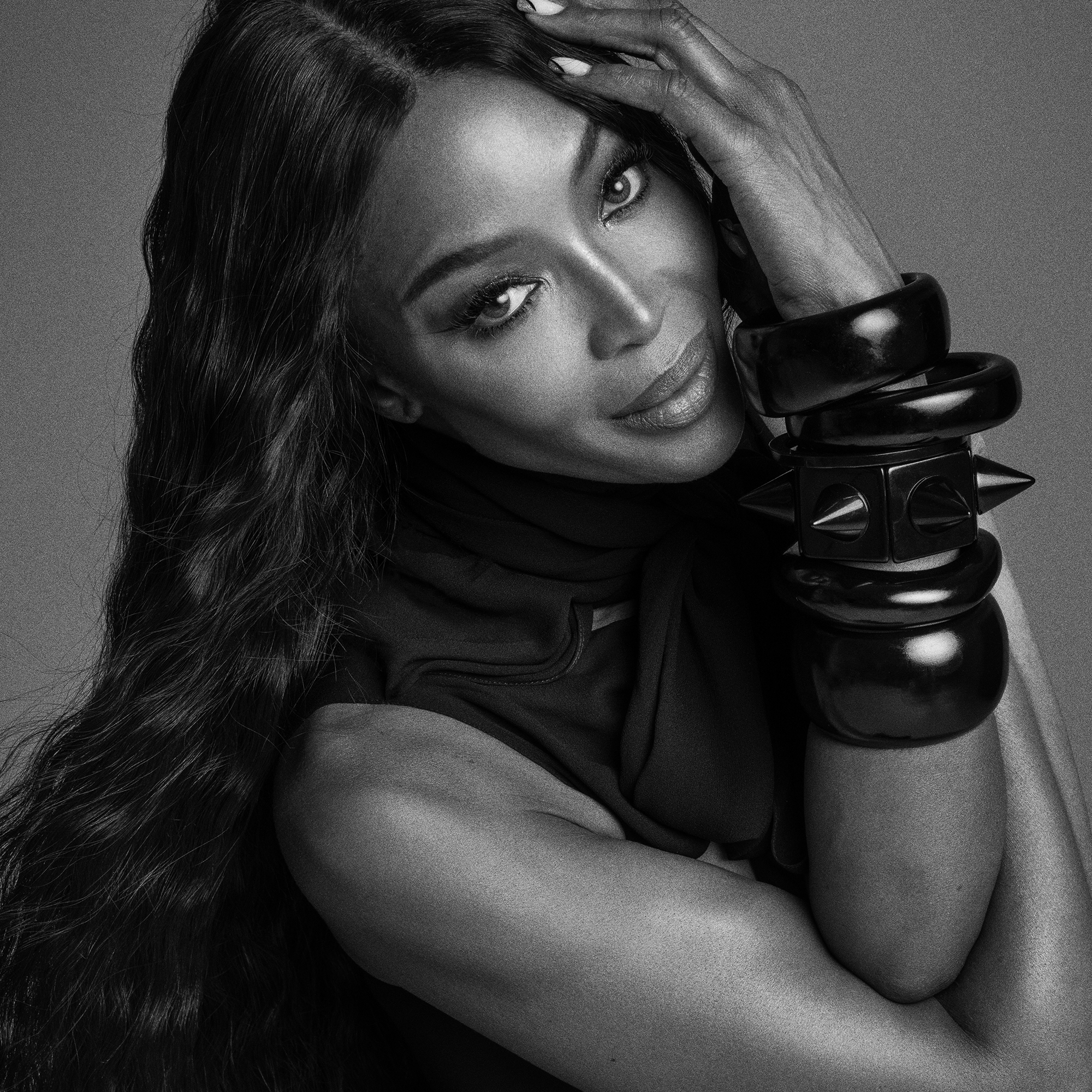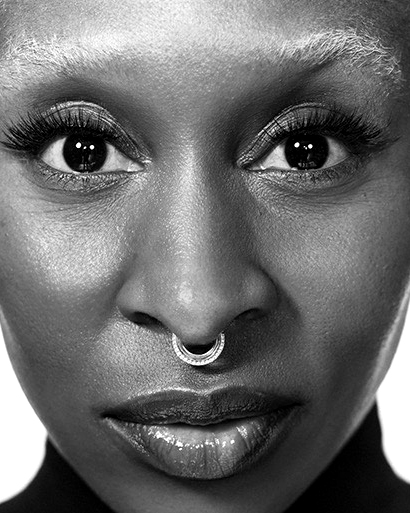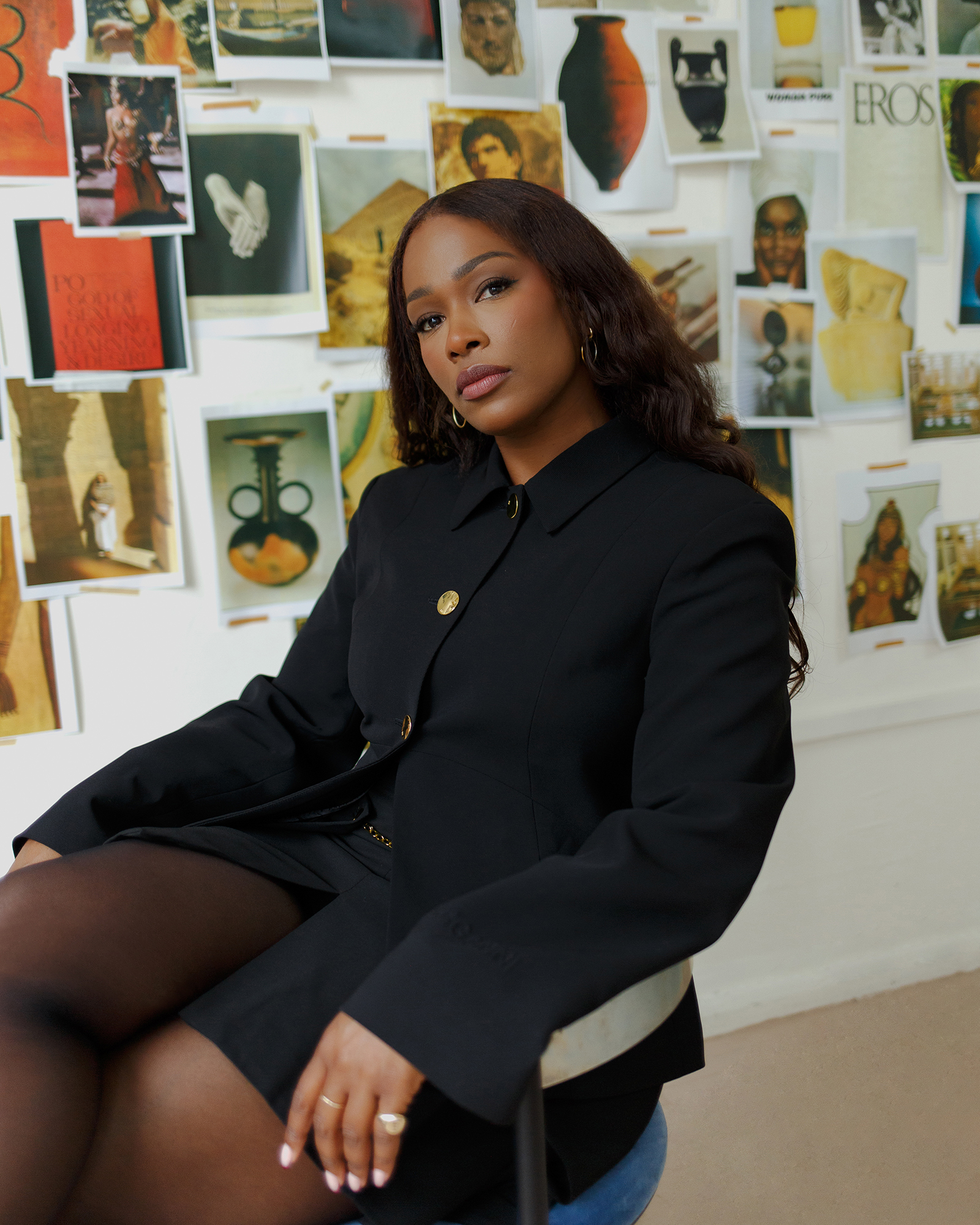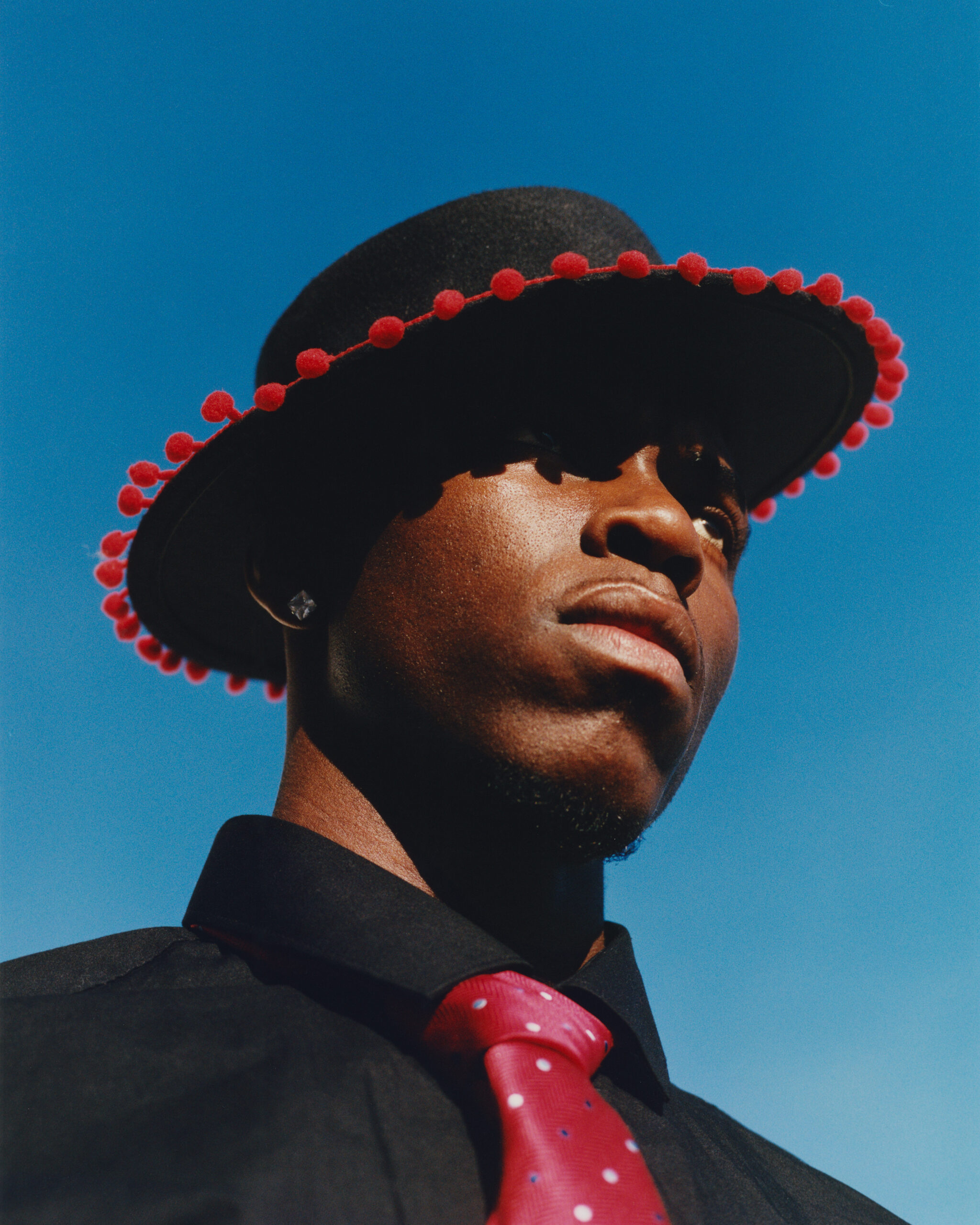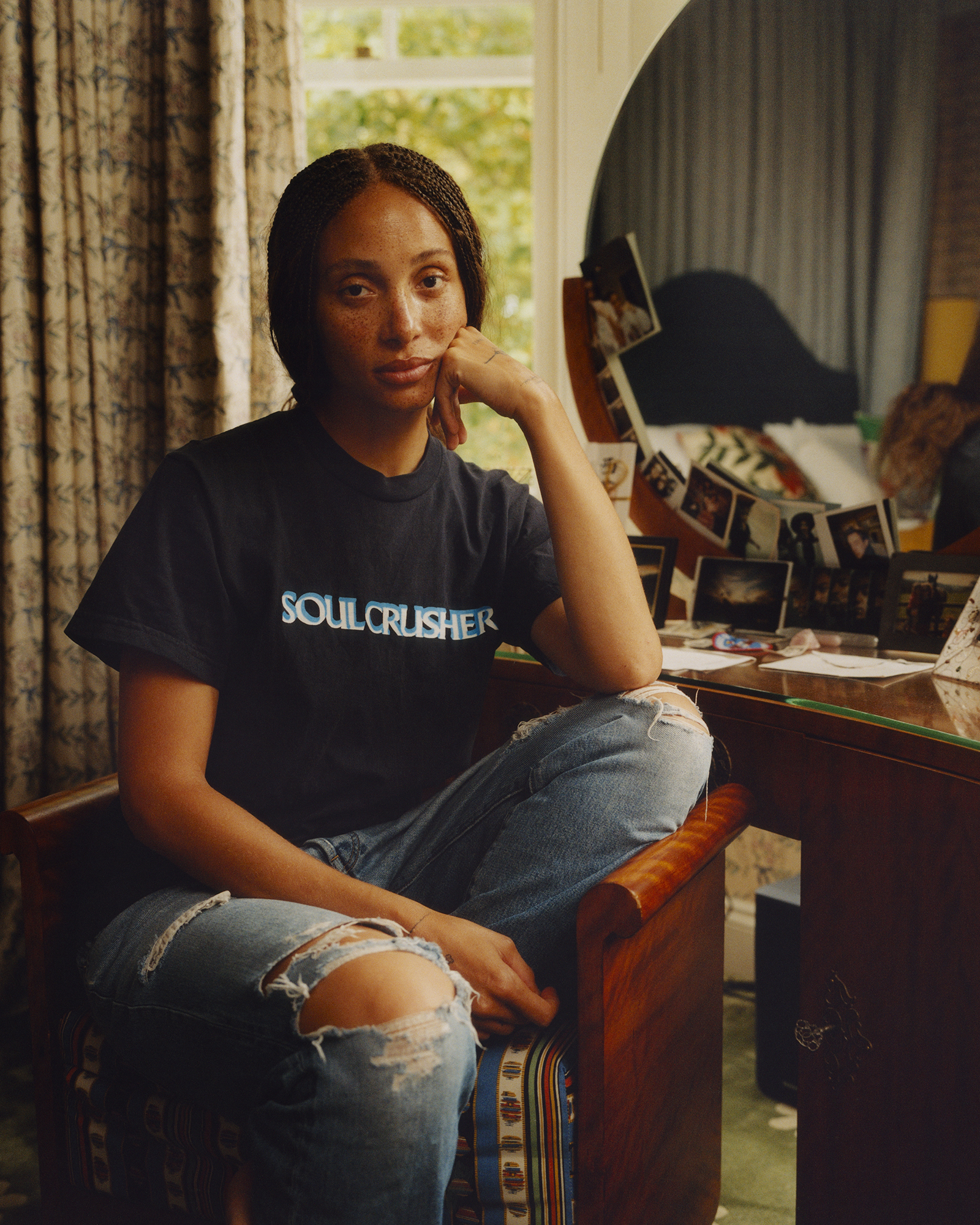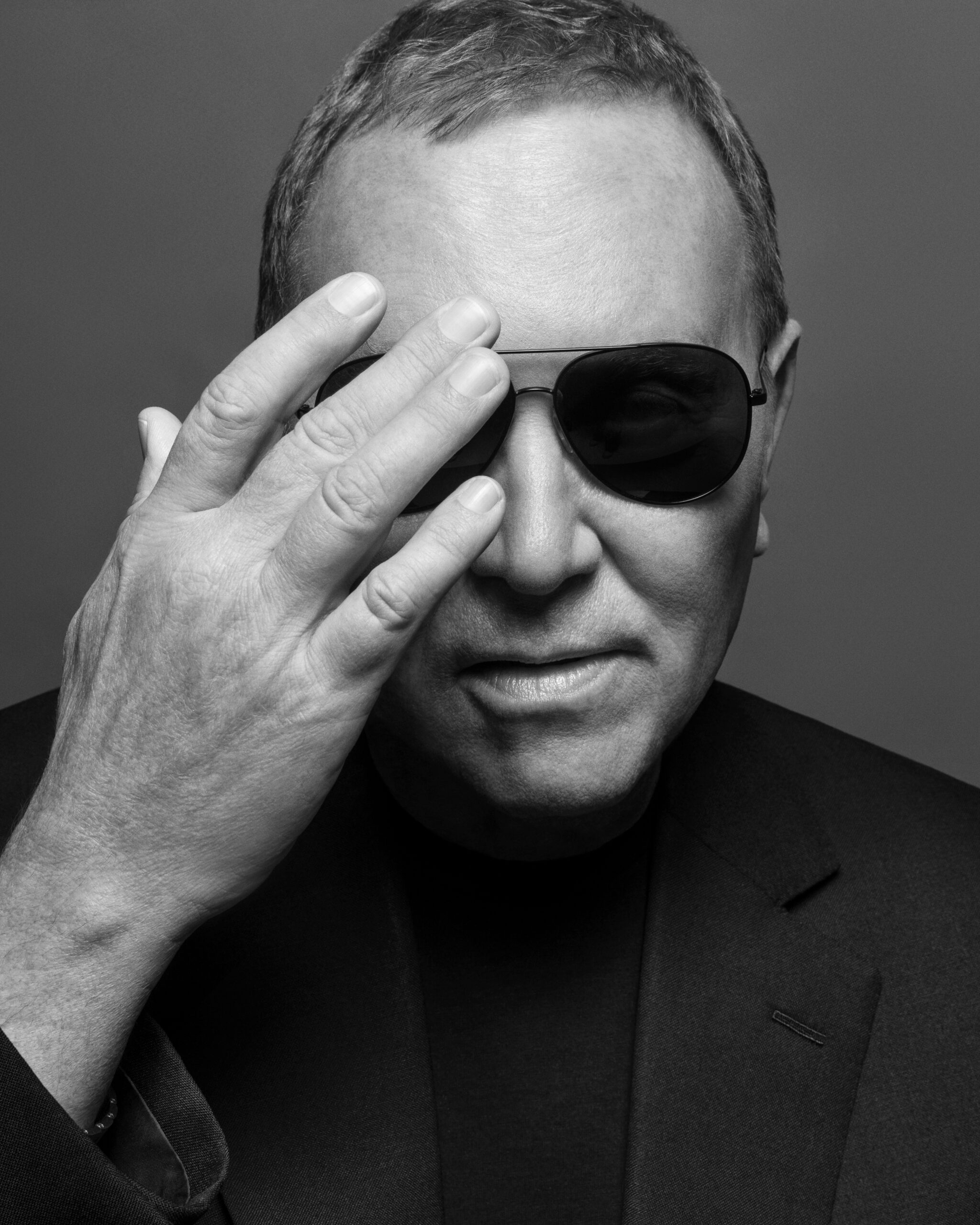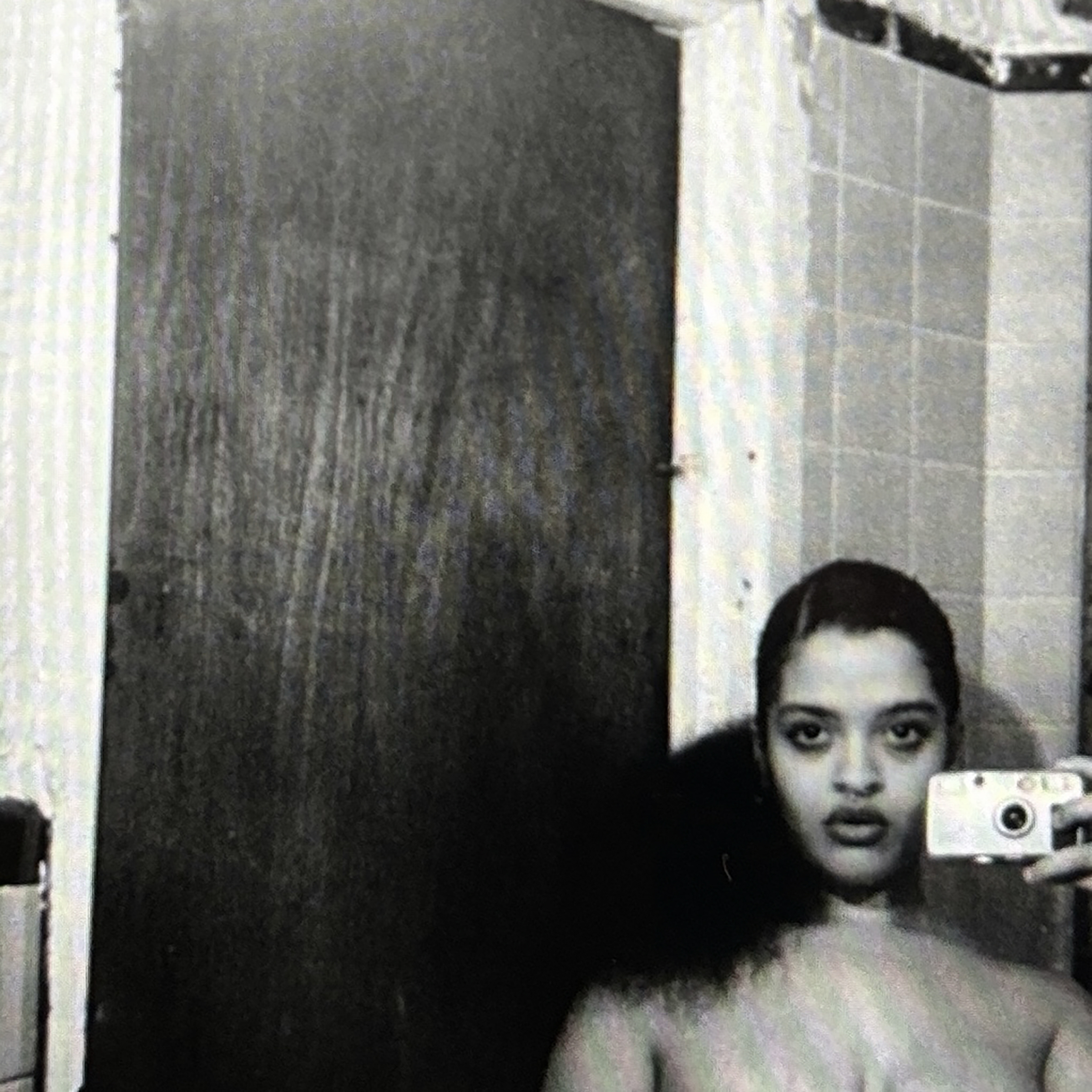
Creative Inquiry: 7 Questions with Photographer Ashley Peña
We asked photographer Ashley Peña 7 questions to get inside her process.
“I know it’s time to press the shutter when something in the air shifts,” photographer Ashley Peña tells EE72. “I’m often looking for that moment of transition, I think a lot of truth lives there. Because of this, many of the images I’m drawn to are the beginning or ending shots, or what I call the in-between moments.”
Capturing those in-between moments forms the heart of the New York- and Dominican Republic-based artist’s gripping portfolio of work. Peña’s focus is on bearing witness to the Black diasporic experience, work she describes as both a celebration and a mourning. Editorially, she has taken portraits of Simone Biles, Amandla Stenberg, Jodie Turner-Smith, Mahershala Ali, Bobby Shmurda and more. She most recently was among the photographers who visually chronicled EE72’s New York launch party.
Her photography is intentional and vivid, every snap a glimpse into the lived experience of her subject. Here, she opens up about what she sees, how she sees it and what drives her work.
EE72
What is the first image you can remember making that felt truly yours — and why does it still stay with you?
AP
It’s an image I took in 2017 of my two cousins playing with toy guns in the front yard. I asked them to look at me in the middle of playing, and one photo stayed with me — both boys equally in the frame, one eye meeting the camera, the other looking through the gun’s scope. I rediscovered the image in 2019 and began experimenting with it — scanning, tearing, piecing it back together. The process itself reminded me of things that can be broken — systems, perception, language, etc. What began as a candid moment took on a heavier meaning. I couldn’t stop thinking about how someone else different from me might perceive these boys. It had only been three years prior that Tamir Rice was taken from this world for doing the same thing. I believe that it was after this image that I started to take a more caring, intention, and critical approach to image making.
EE72
How do you move from inspiration to execution? Is it instinctual, meticulously planned, or a dance between the two?
AP
It’s definitely a balance between the two. If I’m going to plan an image with another person(s), there’s a level of preparation involved so that everyone is on the same page — especially if there’s a particular story being told. I also allow my practice to be instinctual as I respond to light, gesture, and energy in the moment. Things are always subject to change. Overall, I’d say I’m becoming more meticulous in my practice as I move more critically with images. We are always filtering the world through our own ways of seeing. I spend quite some time researching archives, sketching things out, and working through logistics before picking up the camera — those ideas will always follow me and can be traced throughout my practice. The inspiration turns into execution whenever the moment feels right, whether that moment presents itself or is created.
The process itself reminded me of things that can be broken — systems, perception, language.
EE72
Your work spans both photography and art — how do those practices inform each other, and where do they diverge?
AP
If I create something derived from feeling, care and intentionally, I would consider this a form of art. That goes for my photography as well. I’d like to think I don’t separate the two — whether it’s the art of a portrait, a recording, or a texture. If it makes me or someone else feel something deeply is it not considered art? I understand why there’s often a separation between the two terms as things can be created thoughtlessly, carelessly, quickly, or unskillfully. Photography is such a powerful tool —there’s nothing casual about it. With every crop, there’s a frame: with every frame, there’s a story, a record in time, a stance on beauty, etc.
EE72
When you’re away from familiar surroundings, what anchors your creative eye — rituals, tools, or something less tangible?
AP
If I’m away from familiar places, I look for the one thing that will always be there — elements of the earth. The trees, the grass, or anywhere there’s flowing water. Even a patch of dirt. Those things make me feel grounded and clear minded in cloudy or unfamiliar environments. Nature is a constant reminder that many elements work together to serve a greater whole; it reminds me that nothing is created in isolation. It also pushes me to connect back with people whenever I get too comfortable being alone. Another thing I do to tune myself is simply to consume for a while — books, texts, images, sounds, conversations with others. Anything that activates a sensory experience and helps me see differently again.
EE72
Who or what has shaped your visual language most profoundly?
AP
I’m inspired by what surrounds me and the historical research I do. I like to think of my work as a mirror — reflection of all the things I know and care about. There will always be research, ideas and people I’m critical of, and every time I pick up my camera, I’m creating from that framework — whether the image is carefully planned or made candidly. I also believe the education I received helped shape how I think critically about the images I was creating and encountering. I was taught to listen and observe more than to document, to record everything — sounds, voices — and to embrace the moving image. My visual language is shaped by a past and ongoing archive, where everyday life is documented with dignity and care. That archive, combined with listening to my subjects, shapes the way I create. I am inspired by real people, stories and events — I am witness to so much beauty, aging, love, gatherings, separations, births and rebirths. I’m also deeply influenced by artists like Roy DeCarava, Lorna Simpson, Charles White, and Ming Smith, and by thinkers such as Dr. Deborah Willis, Christina Sharpe, Dionne Brand, Franz Fanon, Toni Morrison, Zora Neale Hurston and Lorgia García-Peña to name a few.
With every crop, there’s a frame; with every frame, there’s a story, a record in time, a stance on beauty.
EE72
When you’re behind the camera, what are you searching for in your subject that makes you press the shutter?
AP
I know it’s time to press the shutter when something in the air shifts — whether it be a person I’m photographing for the first time or someone I know very well. As humans we are often shifting — from vulnerability to sadness to joy. I’m often looking for that moment of transition, I think a lot of truth lives there. Because of this, many of the images I’m drawn to are the beginning or ending shots, or what I call the in-between moments. The images make themselves at the end, made by the dynamic created between myself and the person I’m photographing. We end up finding something together.
EE72
What’s an experiment, medium, or idea you haven’t yet explored but are itching to try?
AP
I really want to integrate sound into my practice. I think it would activate my work on a whole different level — whether through field recordings, sound frequencies or melodies. I’ve been collecting a range of sounds for years now via memo recordings; I have hours and hours of sounds. From an elder schooling me about love to the man in the subway singing Donny Hathaway to himself with the raspiest of voices, producing a sound so heavy that it follows you. I look forward to when these two practices merge. I think that’s one of the reasons I’m also starting to dip my fingers into moving images, filming. There’s something so activating and continuous about the combination of sound and motion.
Read more: Creative Inquiry: 7 Questions with Jawara
